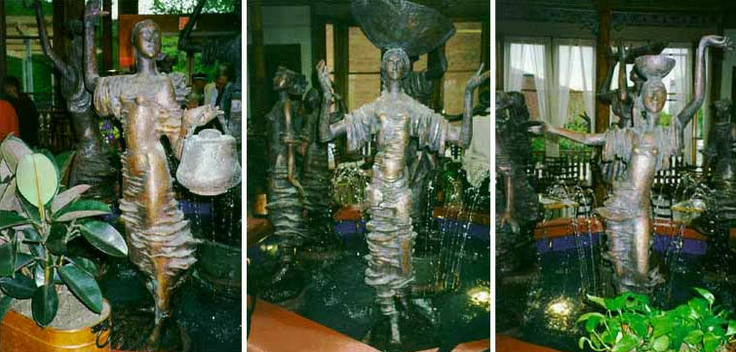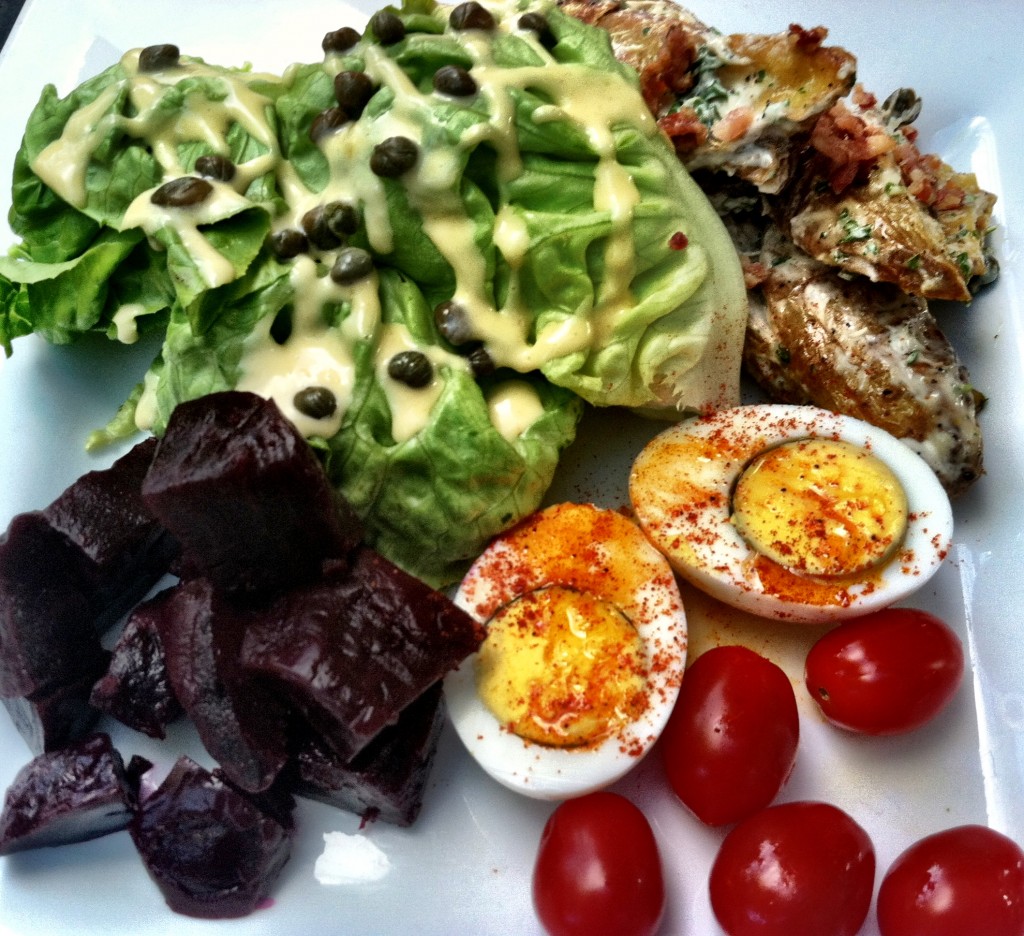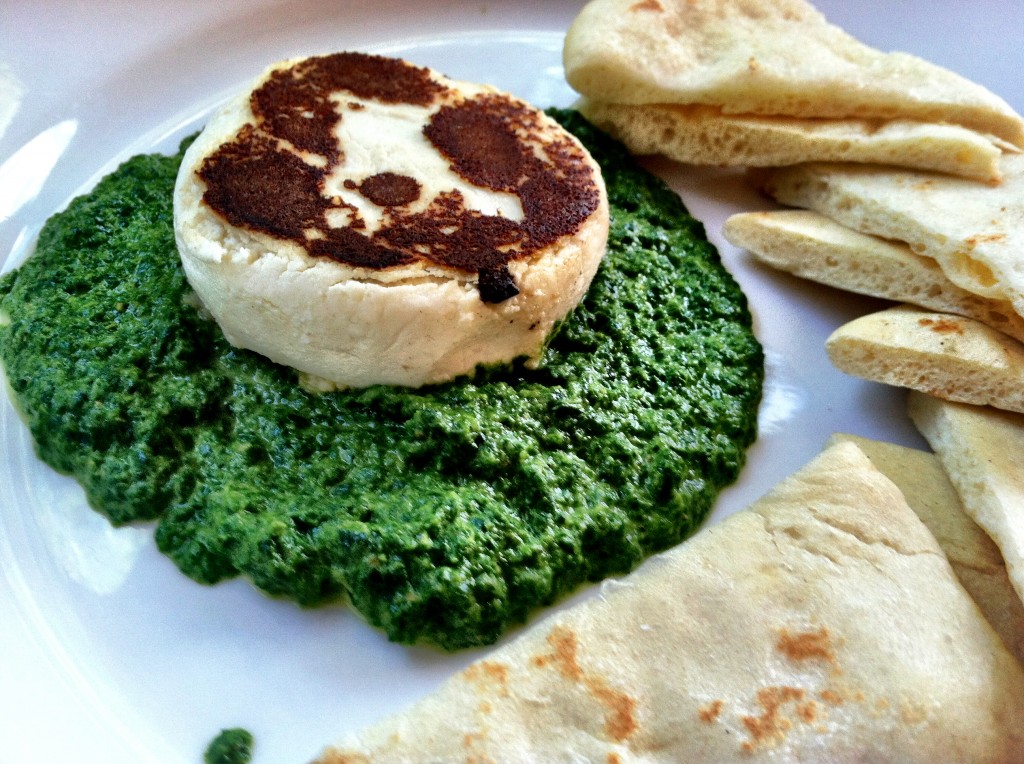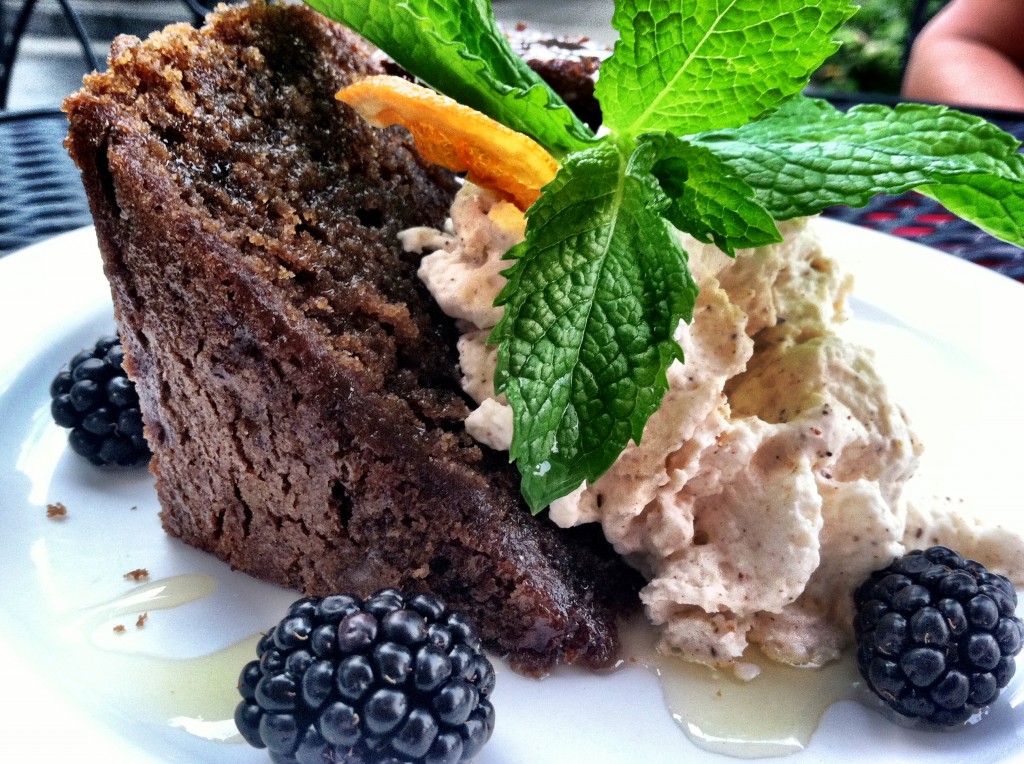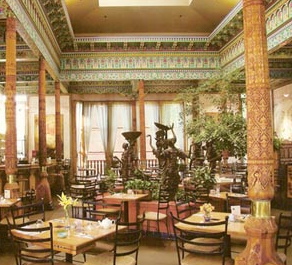 The Boulder Dushanbe Teahouse is nestled against the Rocky Mountain Foothills in Boulder Colorado. Sitting alongside Boulder Creek in Central Park, the Teahouse is considered one of Boulder’s most attractive and popular tourist attractions, as well as being a local favorite for great food, tea, and atmosphere.
The Boulder Dushanbe Teahouse is nestled against the Rocky Mountain Foothills in Boulder Colorado. Sitting alongside Boulder Creek in Central Park, the Teahouse is considered one of Boulder’s most attractive and popular tourist attractions, as well as being a local favorite for great food, tea, and atmosphere.
Completely build by hand without the use of any power tools, the Teahouse was constructed in Dushanbe, Tajikistan as a gift to their sister city, Boulder. It was disassembled, crated up, and sent halfway around the world to be rebuilt in Boulder as a symbol of friendship and cultural exploration.
n the central pool of the Teahouse there are seven hammered copper sculptures created by artist Ivan Milosovich. The life sized sculptures are based on a 12th century poem, “The Seven Beauties ” the 4th poem of Nizami Ganjavi’s “Khamsa”.
The poems were completed in 1197 ad. They chronicle the adventures of Shah Bahram Goirr, son of Yargourd the 1st from the Sasanids dynasty. Nizami uses the well documented events to explore the themes of social justice, morality, and appreciation of nature. The poem is notable for deep content and social sense, as well as rich composition and prominent poetic value.
“The Seven Beauties is the 4th poem of Nizami Ganjavi’s “Khamsa, which means “Five Treasuries”. The works were completed in 1197 ad, and chronicle the adventure of Shah Bahram Goirr, son of Yargourd the 1st from the Sasanids dynasty. Nizami uses the well documented events to explore the themes social justice, morality, and appreciation of nature. The poem is notable for its deep content and social sense, as well as its rich composition and prominent poetic value.
In the middle ages, the number “SEVEN” was considered a sacred number. Both mythological and scientific beliefs of the day held that the world was divided into seven countries, there are seven planets, weeks are divided into seven days, and the spectrum is composed of seven colors.
In his youth, our hero sees portraits of the seven daughters of the continents in a luxurious palace loses his heart to them. Later, when he becomes the Shah of Iran, he sends for the seven women and marries them. He has the renown architect, Shidda, build a palace with seven cupolas, each colored a different color with a corresponding planet. On the proper day of the week, Bahram would dress himself in the appropriate color, and go to visit the wife that corresponded with the day.
Each woman would relate to him a story from her native land and praise the attributes of her own color. All the tales are closely related to popular folklore and combine the scientific and philosophical views on the symbolic effects of the colors. The poem inspires honesty, virtue and kindness, while denouncing arrogance, villiany, greediness and treachery. And so, the princesses’ tales serve not only to entertain the Shah, but to ponder life and consider the secrets on the universe and human nature.
The outside panels are equally stunning. Eight colorful ceramic panels, created by Victor Zabolotnikov, grace the building’s exterior and display patterns of a “Tree of Life”. Each panel was sculpted in Tajikistan, cut into smaller tiles, fired, and then carefully packed to be sent to the USA. Once here, they were repositioned together by Victor, who was visiting to help with construction.
Known for both fabulous and ethnically diverse food and a wide range of teas, you can explore different sides of your palette.
On the entree side, some great choices include the lamb, plov rice, dried fruit with cucumber yoghurt, a Papardelle Bolognese served with beef, pork, tomatoes, herbs and garlic, the Khoresht (e Naranj), pictured below, which is a Persian spice rubbed half chicken, blood orange, white rice, carrots, almonds, served with seared farm greens, the Vietnamese Pho, which is beef broth, sliced teres major, rice noodles, bean sprouts, bok choy, scallion, chili, red onion, cilantro and mint, the Bengali Salmon, an Indian spice rubbed salmon, mustard curry, white rice, kohlrabi slaw and green chili chutney, the Thai Panang Beef, which is a braised brisket in a panang curry with scallion rice cake, or the Brazilian Vatapa, a yummy seared mahi mahi, shrimp, lobster, seafood coconut sauce, tomato, microgreen salad, with acai and rice.
They have an enormously large menu of teas, ranging from white tea and green tea to oolong and black. White Tea consists of the two steps of harvesting and drying. The leaves are not rolled or allowed to oxidize at all. This leaves the leaf in a full, unbroken, natural state. Originally, white tea was only produced in the Fujian province of China using bushes that were carefully selected and cultivated to produce this type of tea. Only the newest, downy tips were meticulously harvested to create tea that was used as “tribute tea” for the emperor. Today we can find two major styles of white tea; traditional “buds only” tea, such as Silver Needle, and the “bud and leaf” style, such as White Peony (bai mu dan).
Green Tea is not oxidized. After being harvested, sorted, and allowed to air-dry for a brief period (just long enough to reduce the moisture content about 10% and make the leaf more pliable), the leaf undergoes a process of firing or steaming. This stops any enzyme action or oxidation of the leaves and fixes the juices in the leaf. Many green teas are rolled or shaped using traditional techniques, creating a vast array of leaf styles from which to choose.
Oolong Tea encompasses all the tea that is partially oxidized, and the manufacture of oolong tea is an artform in its own right. Each farm or tea garden has proprietal methods of making their own type of tea. The tea goes throught the intial steps of harvesting, sorting and weighing, and is then allowed to wither for a brief period. It is the next step that truly defines oolong tea as an artisan product. The leaves are bruised, using a variety of methods, and are then allowed to oxidize. Skillful timing and careful handling during thia process determine the final outcome in your cup.
Black Tea undergoes processing to fully oxidize the leaf, allowing natural and robust flavors to emerge. In the orthodox method of manufacuring, after harvesting and sorting, the leaves undergo the withering step where they are spread in several inch thick layers and allowed to dry, reducing the moisture of the leaf. This process usually takes about 18 – 20 hours and must be carefully controlled to produce the best teas. When the withering process is complete, the leaves are then rolled using modern machinery that rolls, twists, and compresses the leaf. This action bursts the cell structure, releases the juices of the leaf and promotes the start of the oxidation process.
You should also know about the 13th annual Rocky Mountain Tea Festival on July 28-29, 2012 in Boulder. For more blog posts on the Boulder/Denver area, go here.

Renee Blodgett is the founder of We Blog the World. The site combines the magic of an online culture and travel magazine with a global blog network and has contributors from every continent in the world. Having lived in 10 countries and explored over 90, she is an avid traveler, and a lover, observer and participant in cultural diversity. She is also the founder of the Magdalene Collection, a jewelry line dedicated to women’s unsung voices and stories, and the award-winning author of the bestselling book Magdalene’s Journey
She is founder of Blue Soul Media and co-founder of Blue Soul Earth as well as the producer and host of the award-winning Blue Soul CHATS podcast, that bridges science, technology and spirituality. Renee also founded Magic Sauce Media, a new media services consultancy focused on viral marketing, social media, branding, events and PR. For over 20 years, she has helped companies from 12 countries get traction in the market. Known for her global and organic approach to product and corporate launches, Renee practices what she pitches and as an active user of social media, she helps clients navigate digital waters from around the world. Renee has been blogging for over 16 years and regularly writes on her personal blog Down the Avenue, Huffington Post, BlogHer, We Blog the World and other sites. She was ranked #12 Social Media Influencer by Forbes Magazine and is listed as a new media influencer and game changer on various sites and books on the new media revolution. In 2013, she was listed as the 6th most influential woman in social media by Forbes Magazine on a Top 20 List.
Her passion for art, storytelling and photography led to the launch of Magic Sauce Photography, which is a visual extension of her writing, the result of which has led to producing six photo books: Galapagos Islands, London, South Africa, Rome, Urbanization and Ecuador.
Renee is also the co-founder of Traveling Geeks, an initiative that brings entrepreneurs, thought leaders, bloggers, creators, curators and influencers to other countries to share and learn from peers, governments, corporations, and the general public in order to educate, share, evaluate, and promote innovative technologies.

